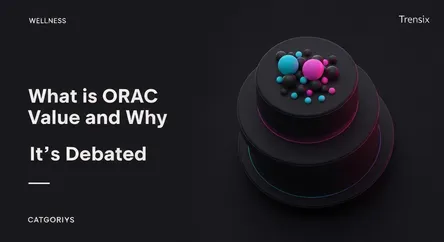Wellness
What is ORAC Value and Why It's Debated

Learn about ORAC (Oxygen Radical Absorbance Capacity), a measure of antioxidant content in food, and why this once-popular metric is now controversial.
What is it?
ORAC, short for Oxygen Radical Absorbance Capacity, is a laboratory measurement of a food's antioxidant strength. Developed by scientists at the National Institutes of Health and the USDA, this method was used to determine how well a substance could neutralize harmful molecules called free radicals in a test-tube environment. Foods with high scores, like spices, dark chocolate, and berries, were thought to offer more protection against oxidative stress, which is linked to aging and various diseases. The ORAC score was presented as a simple guide for identifying antioxidant-rich foods.
Why is it trending?
The concept of an ORAC score became a popular marketing buzzword, helping to fuel the "superfoods" trend. Food and supplement companies heavily promoted the high ORAC values of their products to appeal to health-conscious consumers. However, the trend took a sharp turn in 2012 when the USDA removed its official ORAC database from its website. The agency stated there was no evidence that these lab-measured values translated to actual health benefits in the human body and that the numbers were being routinely misused for marketing claims.
How does it affect people?
ORAC values influenced many people to select foods based on their antioxidant score, believing it was a direct measure of healthfulness. While consuming foods that are naturally high in antioxidants is beneficial, experts now caution against relying on this single, in-vitro metric. The main issue is that a high score in a lab doesn't account for how the body actually absorbs or uses these antioxidants. The withdrawal of the USDA database has led to a more critical view of such simplified health metrics, encouraging people to focus on a balanced and varied diet rich in fruits and vegetables rather than chasing the highest number.